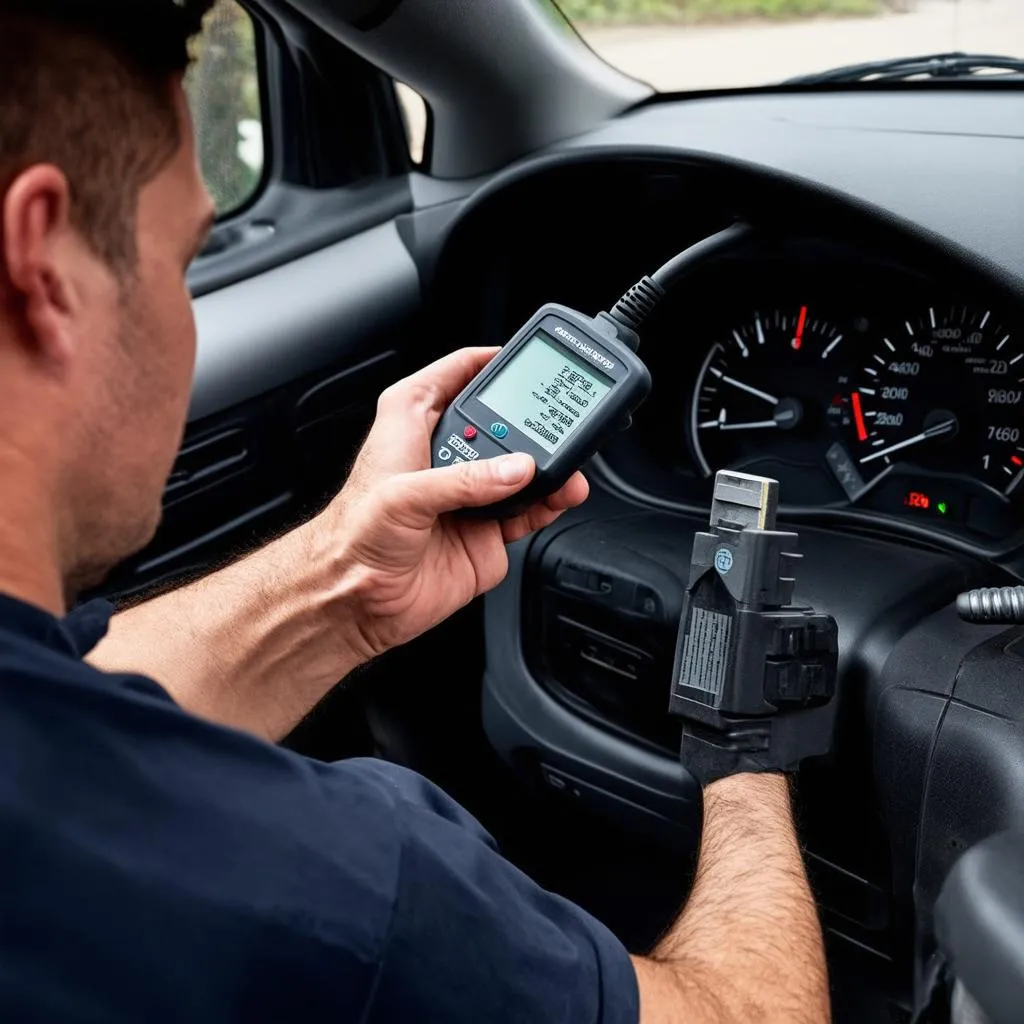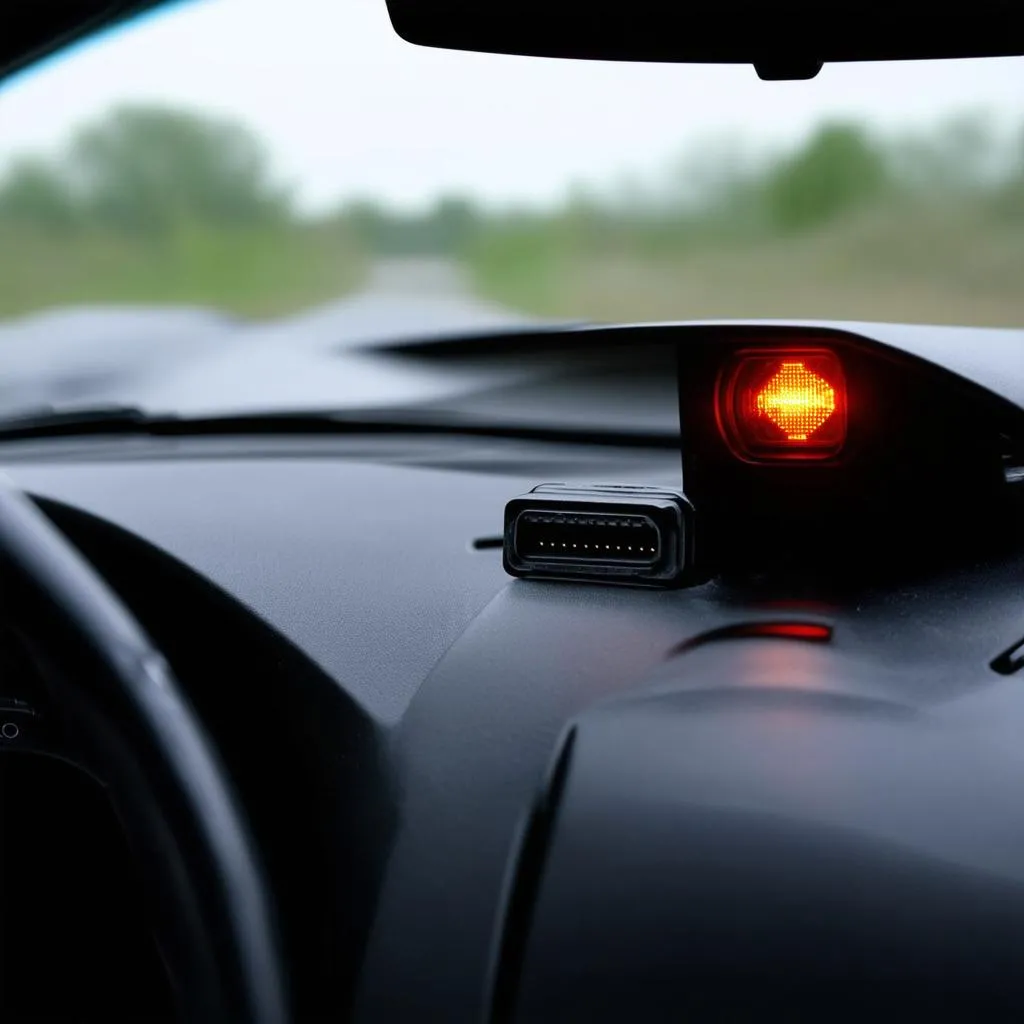Ever wondered what that little connector under your dashboard is for? Or perhaps you’ve heard someone mention “OBD” and were left scratching your head. Don’t worry, you’re not alone!
This guide will dive into the world of On-Board Diagnostics (OBD), shedding light on what it is, why it matters, and how it can help you keep your car running smoothly.
What is OBD and Why Should You Care?
OBD, short for On-Board Diagnostics, is like your car’s secret language. It’s a system built into modern vehicles that allows mechanics and even you, the owner, to get valuable insights into your car’s health. Imagine it as a tiny detective living inside your car, constantly monitoring critical systems and recording any issues it encounters.
The History of OBD: A Journey of Efficiency and Safety
The story of OBD goes back to the early 1990s when the US government mandated its inclusion in all new vehicles. It was a response to the need for better air quality and to reduce harmful emissions. The idea was simple: make it easier for mechanics to diagnose and fix problems that contribute to pollution.
This initial mandate, called “OBD-I,” focused primarily on emissions-related issues. Fast forward a few years, and “OBD-II” came into play, expanding the system’s capabilities to include a wider range of sensors and diagnostics.
The Importance of OBD: Your Car’s Silent Guardian
Imagine your car as a living creature. It needs to be taken care of to run smoothly and live a long life. OBD, in a way, is your car’s internal voice. It tells you when something is wrong, allowing you to address issues before they escalate into major problems.
OBD helps you:
- Prevent costly repairs: By detecting issues early, you can often avoid major breakdowns and the associated repair bills.
- Improve fuel efficiency: Identifying and fixing problems like a faulty oxygen sensor can help optimize your car’s fuel consumption.
- Ensure safety: OBD can alert you to critical problems like malfunctioning brakes, potentially preventing accidents.
What Does OBD Actually Do?
OBD works by using a network of sensors throughout your car. These sensors constantly monitor vital parameters like:
- Engine speed: How fast your engine is running.
- Engine load: How much effort the engine is putting in.
- Fuel trim: The amount of fuel being injected.
- Oxygen sensor readings: How much oxygen is present in the exhaust gases.
- Vehicle speed: How fast your car is moving.
- Transmission temperature: The temperature of your transmission fluid.
When a sensor detects an abnormality, it sends a signal to the car’s computer, known as the Electronic Control Unit (ECU). The ECU then stores this information as a diagnostic trouble code (DTC).
How to Access OBD Data: Your Window into Your Car
The magic of OBD lies in its accessibility. You can access this vital information through a device called an OBD scanner. These scanners plug into a standard connector, usually found under the dashboard, allowing you to:
- Read DTCs: Decode those cryptic codes and understand what’s wrong with your car.
- View live data: See real-time sensor readings to get a better understanding of your car’s performance.
- Clear DTCs: Once you’ve addressed the issue, you can clear the code from the ECU.
The Power of an OBD Scanner: From Mechanic to Car Owner
OBD scanners are no longer just tools for mechanics. They’ve become readily available to the public, empowering car owners with greater control over their vehicles.
Expert Insight: “OBD scanners have democratized car maintenance, allowing owners to play a more active role in understanding and taking care of their vehicles. This fosters a deeper connection between the driver and their machine.” – Dr. Michael O’Connell, Automotive Engineer
Common OBD Questions Answered
What does it mean when my check engine light comes on?
This is the most common signal that your car’s OBD system has detected a problem. It could be something minor, like a loose gas cap, or it could be a more serious issue.
Do all cars have OBD?
Most vehicles manufactured after 1996 in the US have OBD-II. However, some older cars may have OBD-I.
Can I diagnose problems myself?
While OBD scanners make it easier to understand what’s wrong with your car, it’s still best to consult a qualified mechanic for proper diagnosis and repair.
Are OBD scanners expensive?
You can find affordable OBD scanners for under $50, while more advanced scanners with additional features can cost more.
Can I use an OBD scanner for any car?
Most OBD-II scanners are compatible with a wide range of vehicles. However, check the scanner’s specifications to ensure it’s compatible with your car’s year and make.
What are the benefits of using an OBD scanner?
OBD scanners offer numerous benefits:
- Early problem detection
- Reduced repair costs
- Improved fuel efficiency
- Increased safety
- Empowerment of car owners
The OBD System: A Gateway to a Deeper Connection with Your Car
OBD is more than just a diagnostic tool; it’s a bridge between you and your car. It allows you to understand your car’s needs, proactively address issues, and enjoy a smoother, more efficient driving experience.
Expert Insight: “Understanding your car’s OBD system is like learning its secret language. It’s a key to unlocking a deeper connection and appreciating the intricate workings of this complex machine.” – Ms. Sarah Davis, Automotive Technician
Ready to Learn More?
This is just the beginning of your OBD journey. We encourage you to explore our other articles on OBD, including:
- What is the Difference Between OBD and OBD2?
- Actron CP9680 OBD-II Autoscanner: A Comprehensive Review
- ABS Code Reader OBD: A Guide to Your Car’s Safety System
For any questions or assistance with OBD diagnostics, our team of automotive experts is here to help. Contact us via WhatsApp: +84767531508 for 24/7 support and guidance.
 OBD Scanner for Car Diagnostics
OBD Scanner for Car Diagnostics
 Check Engine Light
Check Engine Light
Happy driving!